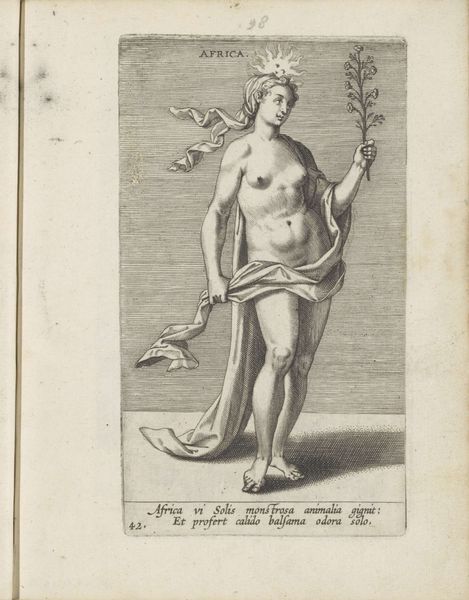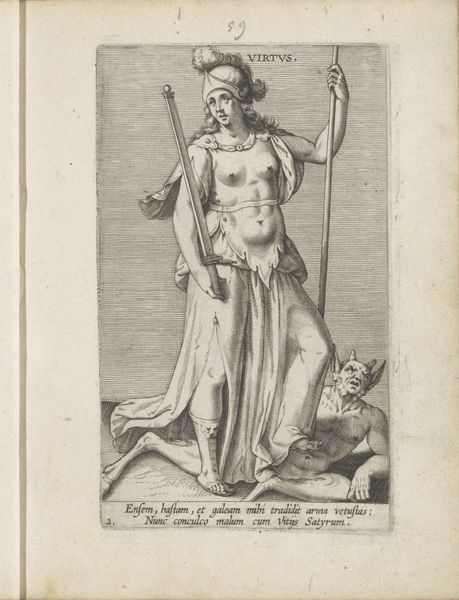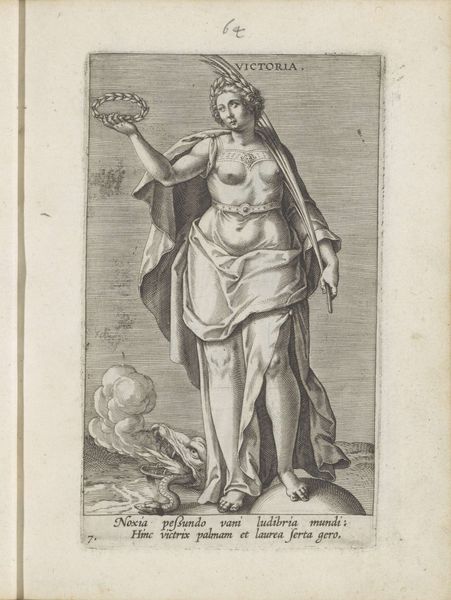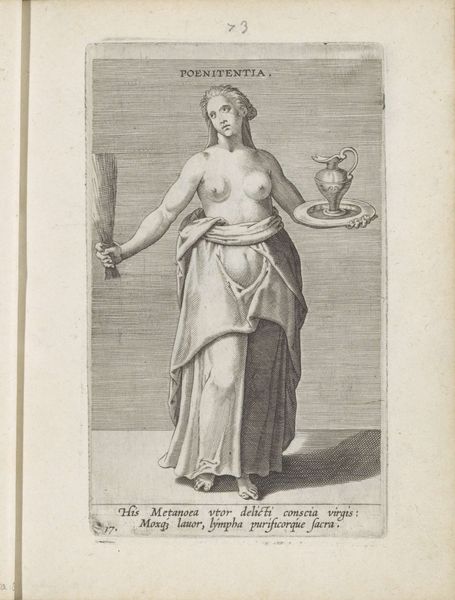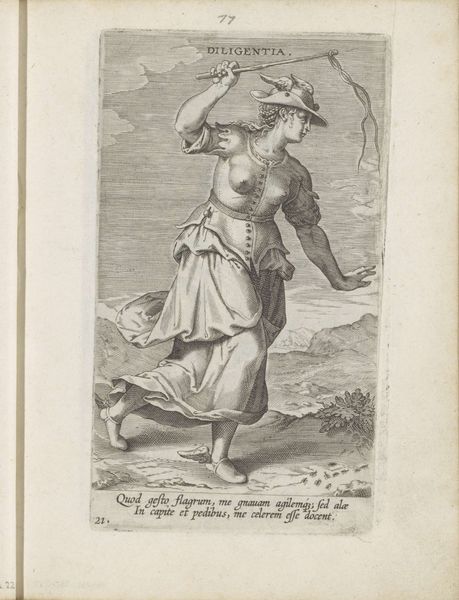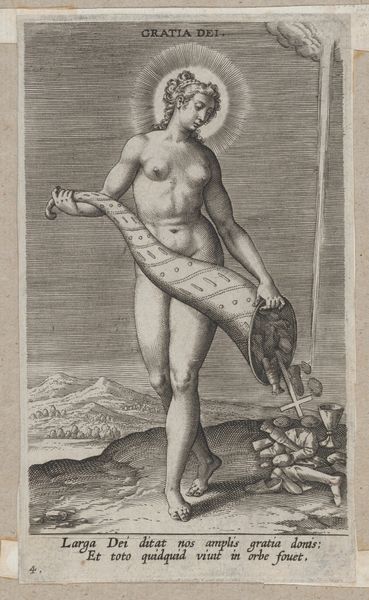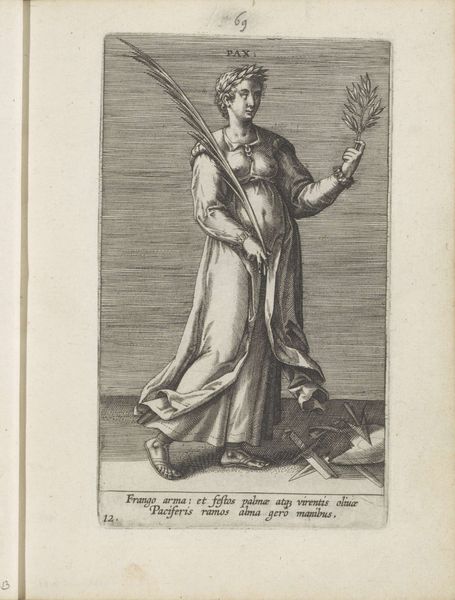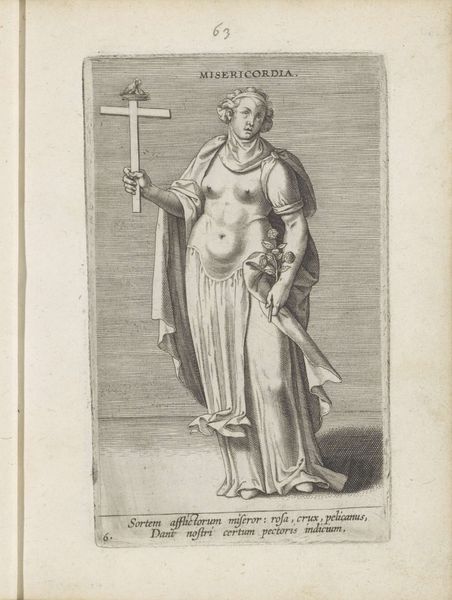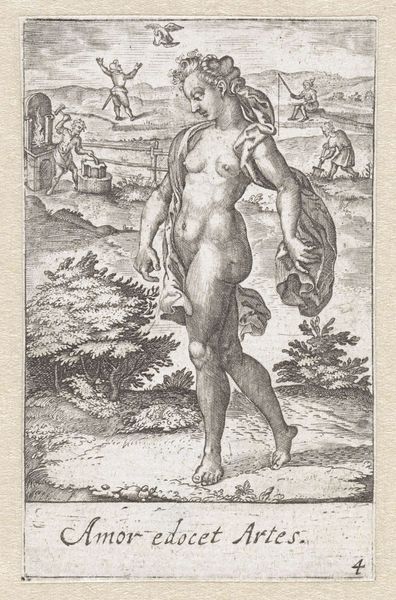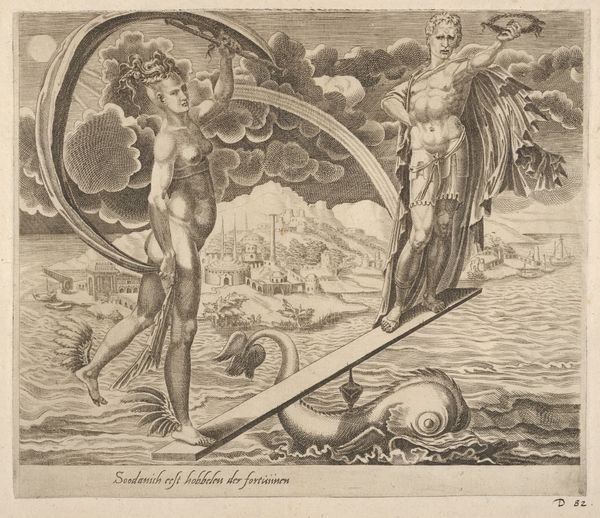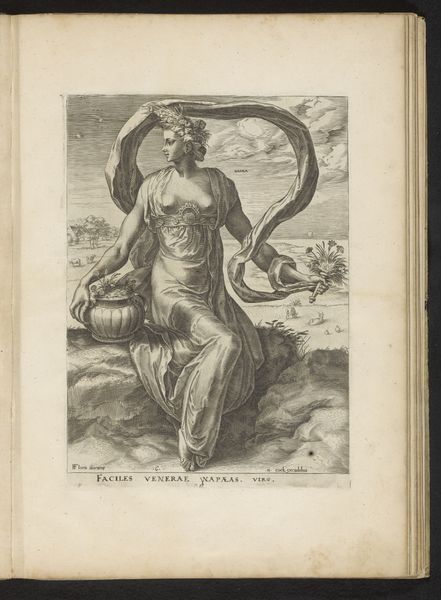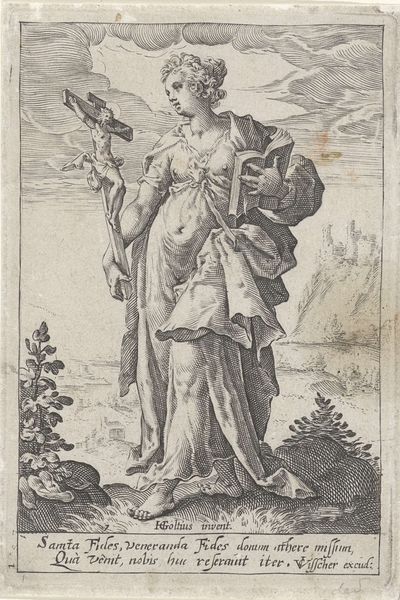
print, engraving
#
allegory
# print
#
old engraving style
#
mannerism
#
figuration
#
history-painting
#
engraving
Dimensions: height 152 mm, width 90 mm
Copyright: Rijks Museum: Open Domain
Curator: This is "Natuur," an engraving created circa 1585-1590 by Philips Galle. It's currently held in the Rijksmuseum collection. The work presents a complex allegorical figure. Editor: It's…striking. There's a distinct sense of unease conveyed through this strange, composite figure and its rather grim materiality. The detail achieved through engraving is certainly impressive. Curator: Galle, deeply rooted in Mannerism, engages with humanist philosophy here, presenting his interpretation of the natural world through this intriguing allegorical representation of nature itself. We must read this figure as a manifestation of ideas about nature that were prevalent in the late 16th century. Editor: Interesting. For me, the key to understanding this print lies in deconstructing its materiality, thinking through the physical labour involved. Note the contrasts – the smoothness of the body against the texture of the animal heads and how they are joined on what looks like a fluted plinth; this creates a powerful statement regarding control of and distance from nature. What kind of consumption were audiences engaging in then, and how does the piece perform that consumption for us now? Curator: Consider the tension between the overtly feminine top half of the figure and the somewhat grotesque arrangement of animal heads forming the lower body. Galle is using this iconography to convey ideas about fertility and abundance, but the inclusion of predators disrupts this interpretation. Is it commentary on the dangers and challenges of nature, perhaps? This also challenges the place of women within the narrative of naturalism. Editor: Precisely. But where did the material come from to develop such an idea? Galle almost certainly used existing, classical images as a source. Also, consider the engraving process itself. It's a mechanical means of reproduction, fundamentally altering and manipulating our understanding of "nature" and making that accessible on paper to a large buying public. Curator: So, as we reconsider the legacy of colonial exploitation of the natural world and environmental issues facing contemporary society, how might a viewer consider the place of such a piece that simultaneously celebrates, commodifies and threatens nature? Editor: For me, thinking about this print makes me realize that artistic practice reflects production values and the consumption of that practice. Ultimately, art acts as both subject and object for examining power, labour, and environment. Curator: I agree. The layering of symbolism with prevailing philosophies regarding nature exposes many points for meaningful contemplation in relation to intersectional issues. Editor: Indeed. A closer look unveils even greater depth.
Comments
No comments
Be the first to comment and join the conversation on the ultimate creative platform.
